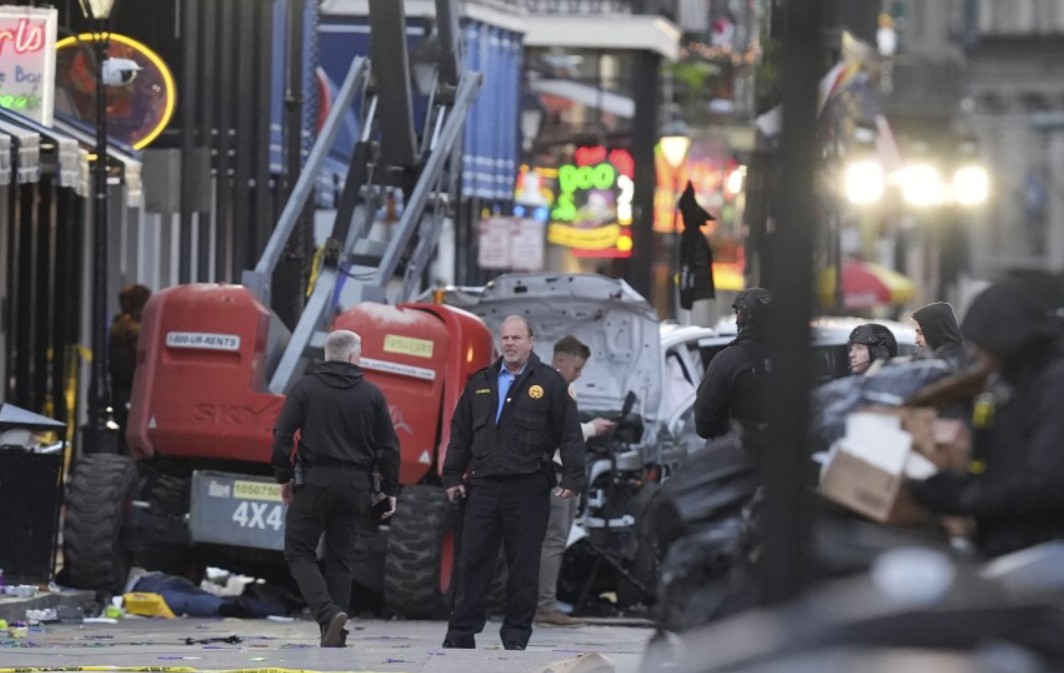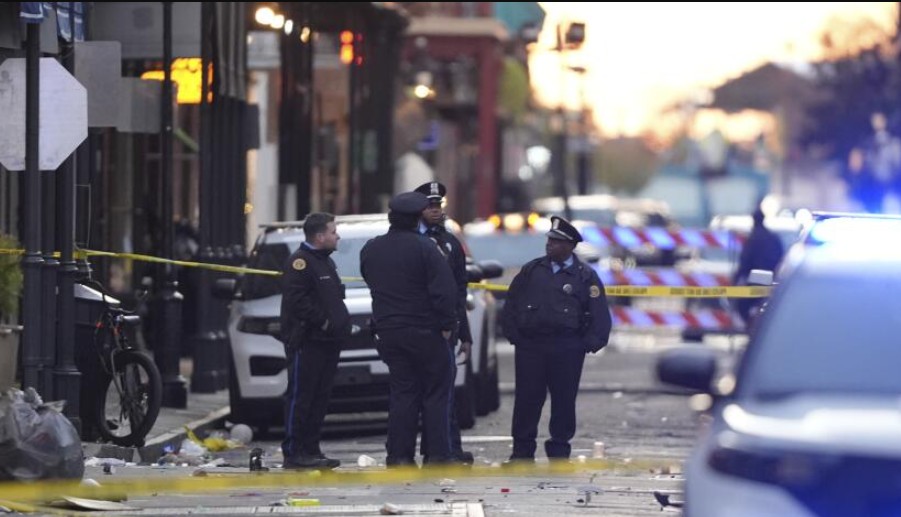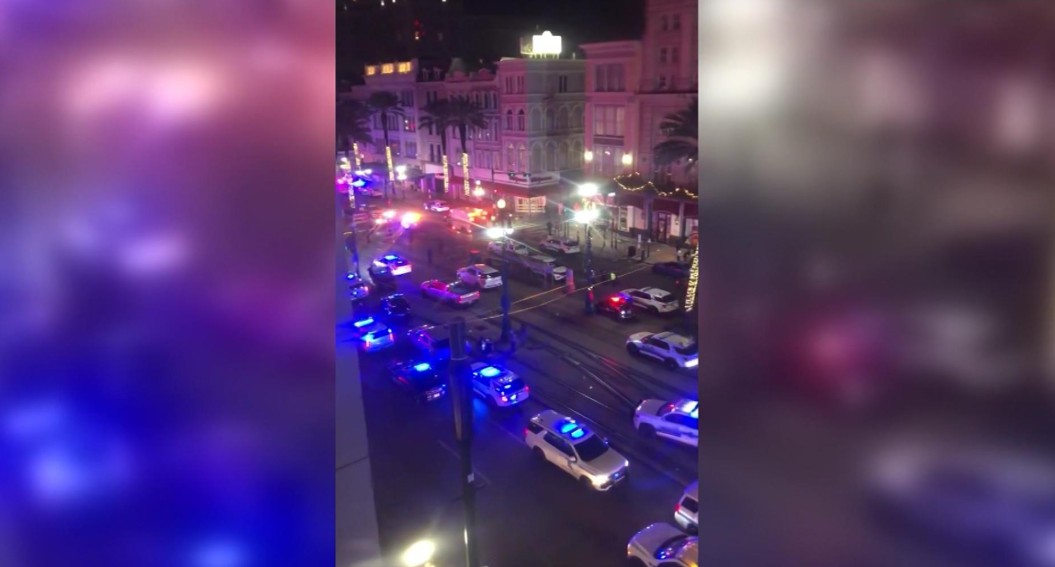New Orleans Mass Casualty Incident Caught on Bourbon
In the early hours of New Year’s Day, celebration in New Orleans’ iconic French Quarter turned into horror when a man deliberately drove a pickup truck into a dense crowd on Bourbon Street. What began as a night of joy and festivity ended in chaos and grief, leaving at least 15 people dead and dozens more injured. The shocking attack has shaken both the local community and the nation at large.
The driver, identified as 42-year-old Shamsud-Din Jabbar, a U.S. citizen from Texas, was killed during a shootout with police. Authorities confirmed that a black ISIS flag was affixed to the rear of his truck, prompting investigators to treat the incident as a potential act of terrorism. Federal agencies, including the FBI, are actively involved in piecing together Jabbar’s actions and motives leading up to the attack.

The vehicle used an electric Ford pickup rented in Texas just days before was later discovered to contain weapons and possible improvised explosive devices (IEDs), further indicating a premeditated act of terror. Officials have not ruled out the possibility that Jabbar had accomplices and are pursuing leads to determine whether others were involved.
As investigators work tirelessly, both local and federal authorities have pledged to bring all responsible parties to justice and to reinforce public safety measures in the wake of this devastating event.
Contents
The Incident and Video
Bourbon Street, usually a symbol of New Orleans’ vibrant nightlife, became the scene of catastrophe in the early hours of January 1st. Jabbar, driving the rented electric Ford pickup, deliberately steered around barricades and onto sidewalks, methodically targeting groups of revelers celebrating the new year.
New Orleans Mass Casualty Incident: Shocking Bourbon Street Attack Caught on Video!
new-orleans-mass-casualty-incident-1.mp4
new-orleans-mass-casualty-incident-2.mp4
new-orleans-mass-casualty-incident-3.mp4
new-orleans-mass-casualty-incident-4.mp4
In the aftermath, emergency services rushed to the scene, confronting horrific carnage. At least 15 people were confirmed dead, with many others sustaining critical injuries. The discovery of weapons and IEDs inside the vehicle underscored the calculated nature of the assault and the scale of destruction Jabbar intended to inflict.
The Attacker
The perpetrator, Shamsud-Din Jabbar, was a 42-year-old resident of Texas with prior military service a background that may have enabled him to plan and execute the assault with chilling precision. Hours before the attack, he reportedly uploaded videos online referencing ISIS ideologies and declaring his intent to cause harm, providing a disturbing glimpse into his mindset.
The confrontation ended when police engaged Jabbar in a shootout, resulting in his death. Inside his truck, authorities uncovered long guns fitted with suppressors and multiple IEDs, evidence of a broader destructive plan and possible collaboration with others.
Investigation and Response
The FBI is leading the investigation, supported by Homeland Security, the ATF, and New Orleans law enforcement. This joint effort highlights the gravity of the attack and its national security implications.

President Joe Biden condemned the assault, expressing condolences to the victims and their families while assuring the public that all available federal resources are being mobilized. Local leaders, including the mayor of New Orleans and the governor of Louisiana, echoed these statements, urging vigilance and cooperation with law enforcement.
Security across New Orleans was immediately tightened, with bomb sweeps and additional patrols deployed particularly in preparation for the Sugar Bowl, which was rescheduled under strict security protocols. Nationwide, officials are now reassessing security strategies for large public gatherings to prevent similar tragedies in the future.
Community and National Impact
The Bourbon Street terror attack has left a deep scar on New Orleans, a city long recognized for its resilience in the face of hardship. Known for proactively preparing against mass casualty threats especially in the wake of vehicle attacks seen in other global cities New Orleans had strengthened its security with reinforced bollards and expanded surveillance systems. Yet, this tragedy tested those measures in the harshest possible way. Emergency responders acted swiftly, but the psychological blow to the community, coupled with the likely economic impact on the city’s tourism-driven economy, is expected to linger.

On a national level, the attack triggered immediate responses from political leaders. President Joe Biden offered condolences, denouncing the violence as intolerable and pledging full federal support for both the investigation and recovery. President-elect Donald Trump also issued a statement expressing solidarity with the victims and law enforcement, highlighting a rare bipartisan unity in condemning terrorism.
The incident has reignited debates about homeland security, counterterrorism, and the vulnerability of public spaces. Experts are once again calling for stronger intelligence-sharing systems and improved emergency response strategies at both state and federal levels to better detect and deter extremist plots.
Eyewitness Accounts and Human Impact
The true cost of the attack is most clearly reflected in the voices of those who survived it. Witnesses described scenes of sudden chaos and terror as the truck smashed through barriers and into the crowd. Jim and Nicole Mowrer, tourists visiting from Iowa, recalled hearing the crash, watching the vehicle barrel forward, and then the eruption of gunfire. Their testimony, along with many others, paints a haunting picture of panic, confusion, and the desperate fight for survival.
The wider community is now mourning lost loved ones while grappling with lasting trauma. Families face unimaginable grief, while first responders who charged into danger and bore the brunt of both the physical and emotional toll are being praised for their courage and commitment. Their resilience stands as a reminder of the human strength that emerges in moments of crisis.
The investigation into the New Year’s Day tragedy is ongoing, as authorities continue to piece together Jabbar’s motives and actions. Community support for victims and first responders has been overwhelming, underscoring the spirit of solidarity that defines New Orleans.
Though this act of terror was isolated, it raises urgent questions about the vulnerability of open public gatherings. As New Orleans heals, lessons from this tragedy will likely shape future security policies striking a balance between preserving the openness of public spaces and ensuring safety so that celebrations never again descend into tragedy.
Daily News -Bianca Censori Grammys Video and Bold Outfit Debate
Scarlett Johansson Viral Video and Unauthorized
Bri and Vale Twitter Video Sparks Debate on Privacy
Bonnie Blue World Record Video and Controversial
Video de Mariana Seoane on Twitter and the Incident
Iryna Zarutska Video and After Charlotte Light Rail Stabbing
Mistafuccyou Suicide Video Sparks Outcry in Crypto Circles

